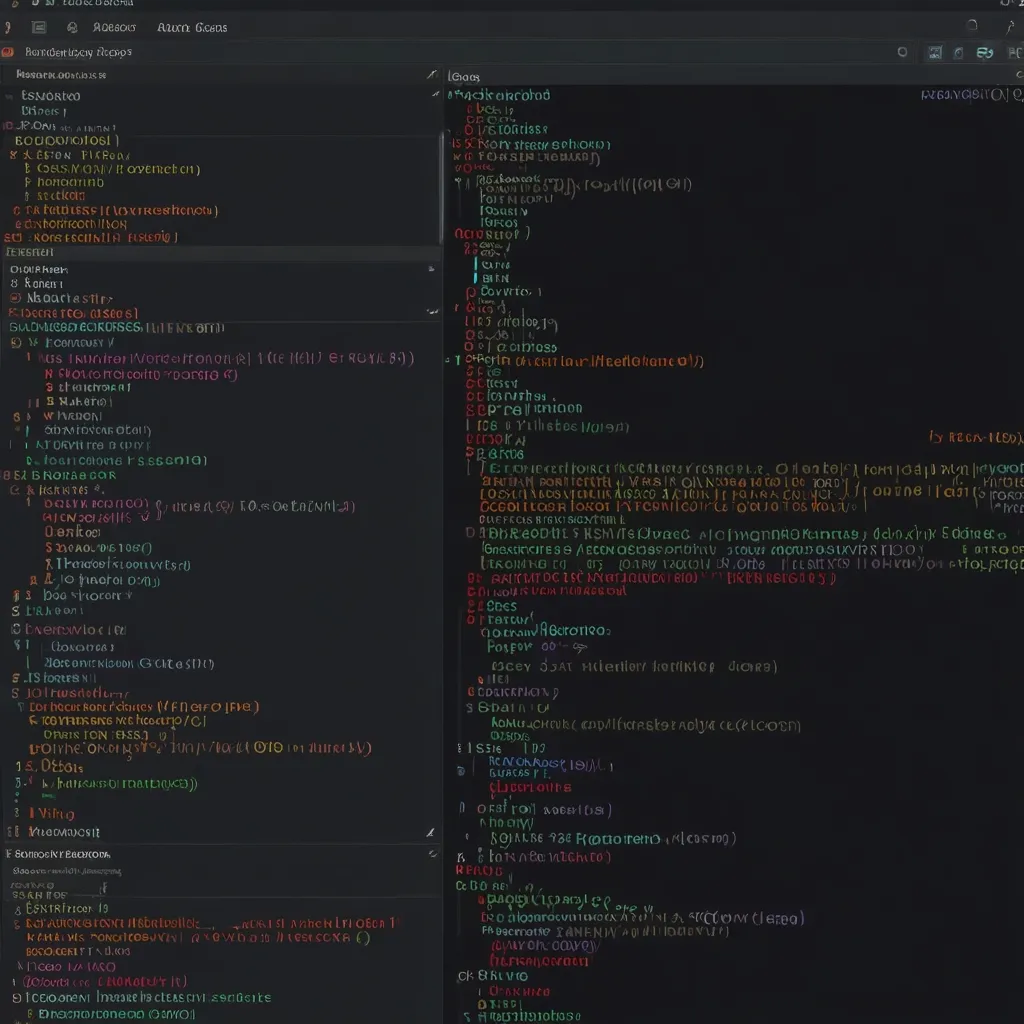Serverless architecture has taken the gaming world by storm, and for good reason. It’s like having a magical genie that handles all the heavy lifting behind the scenes, letting game developers focus on what really matters - creating awesome experiences for players.
So, what’s the big deal with serverless? Well, imagine you’re building the next big multiplayer game. You’ve got players from all over the world, and you need to handle everything from user authentication to real-time gameplay updates. That’s where serverless comes in handy.
First off, let’s talk about scaling. With traditional server setups, you’d need to predict how many players you’ll have and provision servers accordingly. But with serverless, it’s like having an infinitely elastic rubber band. Your game can automatically scale up or down based on the number of players, ensuring smooth performance whether you have 10 or 10 million users.
Now, let’s dive into some code. Here’s a simple example of how you might handle user authentication using AWS Lambda and Python:
import boto3
import json
def lambda_handler(event, context):
dynamodb = boto3.resource('dynamodb')
table = dynamodb.Table('Users')
username = event['username']
password = event['password']
response = table.get_item(
Key={
'username': username
}
)
if 'Item' in response:
if response['Item']['password'] == password:
return {
'statusCode': 200,
'body': json.dumps('Login successful!')
}
return {
'statusCode': 401,
'body': json.dumps('Invalid credentials')
}
This function checks a DynamoDB table for the user’s credentials and returns a response based on whether the login was successful. The beauty of this is that it only runs when needed, saving you money and resources.
But authentication is just the tip of the iceberg. Serverless architecture shines when it comes to handling real-time events in multiplayer games. Let’s say you’re building a battle royale game where players need to receive updates about other players’ positions. Here’s how you might handle that using AWS AppSync and GraphQL:
const updatePlayerPosition = /* GraphQL */ `
mutation UpdatePlayerPosition($input: UpdatePlayerPositionInput!) {
updatePlayerPosition(input: $input) {
id
x
y
z
}
}
`;
async function movePlayer(playerId, x, y, z) {
try {
const result = await API.graphql(graphqlOperation(updatePlayerPosition, {
input: {
id: playerId,
x: x,
y: y,
z: z
}
}));
console.log('Player position updated:', result.data.updatePlayerPosition);
} catch (error) {
console.error('Error updating player position:', error);
}
}
This code snippet updates a player’s position and broadcasts the change to all connected clients. AppSync handles the real-time updates, so you don’t have to worry about managing WebSocket connections or scaling your server to handle thousands of simultaneous updates.
Now, let’s talk about game state management. In a traditional setup, you’d probably have a dedicated server keeping track of the game state. But with serverless, you can use a combination of database services and functions to manage state in a distributed way. Here’s an example using Google Cloud Functions and Firestore:
const functions = require('firebase-functions');
const admin = require('firebase-admin');
admin.initializeApp();
exports.updateGameState = functions.https.onCall(async (data, context) => {
const { gameId, playerId, action } = data;
const gameRef = admin.firestore().collection('games').doc(gameId);
try {
await admin.firestore().runTransaction(async (transaction) => {
const gameDoc = await transaction.get(gameRef);
const gameData = gameDoc.data();
// Apply the player's action to the game state
const newState = applyAction(gameData, playerId, action);
transaction.update(gameRef, newState);
});
return { success: true };
} catch (error) {
console.error('Error updating game state:', error);
return { success: false, error: error.message };
}
});
function applyAction(gameState, playerId, action) {
// Logic to apply the action and return the new game state
// This would depend on your specific game rules
}
This function updates the game state in response to player actions, using Firestore transactions to ensure consistency even with concurrent updates.
One of the coolest things about serverless is how it lets you integrate advanced features without managing complex infrastructure. Want to add voice chat to your game? You can use something like Amazon Transcribe and Polly to handle speech-to-text and text-to-speech, all without spinning up a single server.
Here’s a quick example of how you might use Amazon Polly to generate speech for in-game characters:
import boto3
import os
def generate_speech(text, voice_id='Joanna'):
polly_client = boto3.client('polly')
response = polly_client.synthesize_speech(
Text=text,
OutputFormat='mp3',
VoiceId=voice_id
)
if "AudioStream" in response:
with open('/tmp/speech.mp3', 'wb') as file:
file.write(response['AudioStream'].read())
# Here you'd upload the file to S3 or another storage service
# and return the URL to the client
return {'success': True, 'url': 'URL_TO_AUDIO_FILE'}
else:
return {'success': False, 'error': 'Speech generation failed'}
# Example usage
result = generate_speech("Welcome to the magical realm of Arcadia!")
print(result)
This function generates an MP3 file with synthesized speech, which you can then serve to your players. It’s a great way to add dynamic dialogue to your game without pre-recording every possible line.
Now, let’s talk about some of the challenges you might face when implementing serverless architecture for gaming apps. One big one is latency. While serverless functions are great for many tasks, they’re not always ideal for operations that require ultra-low latency, like real-time combat mechanics in a fighting game.
To address this, you might use a hybrid approach. Use serverless for things like matchmaking, leaderboards, and non-time-critical updates, but maintain a small fleet of dedicated servers for handling real-time gameplay. This gives you the best of both worlds - the scalability and cost-effectiveness of serverless, combined with the low latency of traditional servers where it matters most.
Another challenge is managing state across multiple serverless functions. Unlike a traditional server where you can keep state in memory, each serverless function invocation is typically stateless. This is where services like Redis or DynamoDB can come in handy, providing a fast, scalable way to store and retrieve state information.
Here’s an example of how you might use Redis to manage player sessions in a Go serverless function:
package main
import (
"context"
"encoding/json"
"github.com/aws/aws-lambda-go/lambda"
"github.com/go-redis/redis/v8"
)
var redisClient *redis.Client
func init() {
redisClient = redis.NewClient(&redis.Options{
Addr: "your-redis-endpoint:6379",
})
}
type PlayerSession struct {
PlayerID string `json:"playerId"`
GameID string `json:"gameId"`
Score int `json:"score"`
}
func HandleRequest(ctx context.Context, playerID string) (PlayerSession, error) {
sessionJSON, err := redisClient.Get(ctx, playerID).Result()
if err != nil {
return PlayerSession{}, err
}
var session PlayerSession
err = json.Unmarshal([]byte(sessionJSON), &session)
if err != nil {
return PlayerSession{}, err
}
return session, nil
}
func main() {
lambda.Start(HandleRequest)
}
This function retrieves a player’s session information from Redis, allowing you to maintain state across multiple serverless function invocations.
Serverless architecture also opens up exciting possibilities for analytics and machine learning in games. You can use services like AWS Kinesis or Google Cloud Dataflow to process streams of player data in real-time, feeding into machine learning models to dynamically adjust game difficulty, detect cheaters, or personalize in-game experiences.
Here’s a simple example of how you might use AWS Kinesis and Lambda to process a stream of player events:
import json
import boto3
def lambda_handler(event, context):
for record in event['Records']:
# Kinesis data is base64 encoded so decode here
payload = json.loads(base64.b64decode(record['kinesis']['data']))
player_id = payload['player_id']
event_type = payload['event_type']
event_data = payload['event_data']
if event_type == 'purchase':
process_purchase(player_id, event_data)
elif event_type == 'level_complete':
update_player_progress(player_id, event_data)
# Add more event types as needed
return {'statusCode': 200, 'body': json.dumps('Processing complete')}
def process_purchase(player_id, purchase_data):
# Logic to process a purchase event
pass
def update_player_progress(player_id, level_data):
# Logic to update player progress
pass
This function processes a stream of player events, allowing you to react to player actions in near real-time. You could use this to update leaderboards, trigger in-game events, or feed data into analytics systems.
In conclusion, serverless architecture offers game developers a powerful set of tools to build scalable, cost-effective, and feature-rich gaming apps. While it comes with its own set of challenges, the benefits in terms of scalability, cost, and development speed make it an attractive option for many types of games.
As you embark on your serverless gaming journey, remember that it’s not an all-or-nothing proposition. Start small, perhaps with non-critical features like leaderboards or daily challenges, and gradually expand your use of serverless as you become more comfortable with the paradigm.
And most importantly, have fun! The world of serverless gaming is full of exciting possibilities, and you’re at the forefront of this technology. Who knows? Your next game might just be the one to push the boundaries of what’s possible with serverless architecture. Happy coding!






